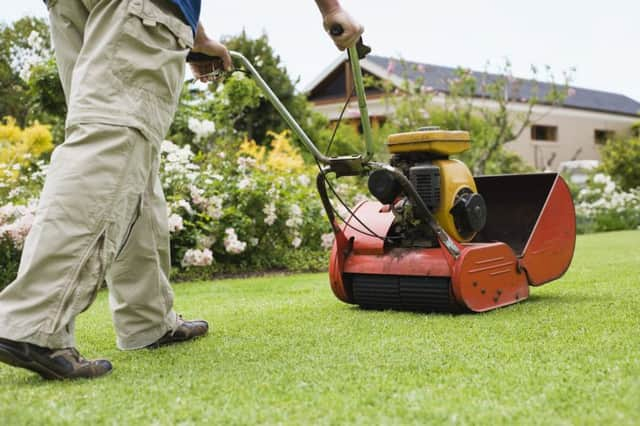BRIAN KIDD: How to deal with the lumpy, bumpy green green grass of home


Lawns look poorly because mowing is not done regularly, the grass is too long and the mower struggles. It’s best to cut it before it grows too high and the job gets done far more quickly.
A spring feed will brighten the grass 10 days after it is applied. Several brands are available. Granular or pelleted fertilisers are best because they provide food for several weeks. Read the instructions on the pack before buying.
Advertisement
Hide AdAdvertisement
Hide AdSome lawn dressings have moss and weedkiller included. They’re more expensive but are effective if the application is done correctly.
Broken edges are a nuisance but can be overcome by cutting out a piece of turf about a foot wide and 18 inches long. Remove the piece of turf with a sharp spade and turn the turf around so the broken edge is on the inside of the lawn.
Now top-dress the damaged part with sieved topsoil or John Innes compost. Grass seed is lightly worked into the damaged area. In a month’s time the area will be perfect.
Rectify depressions by lifting the turf, adding more soil and replacing the turf. However, there is an easier way.
Advertisement
Hide AdAdvertisement
Hide AdUsing sieved John Innes compost and a decent plank, the compost can be levelled, rather like you see builders tamping concrete. Grass seed can then be sown and lightly raked in and watered afterwards. Grass will grow quickly and after six weeks the lawn will be transformed.
Humps usually mean lifting turf, but there is an easier way. Buy a hollow tine, a device to remove cores of soil about four inches long. Insert the tine all over the hump and then using the back of a spade, gently pat the lawn and the hump will sink. If it doesn’t, make more holes!
Worn areas, especially at the edge of the grass where everyone walks on to the lawn can be overcome by replacing that grass with a stone slab.
Put the slab on the lawn and use a sharp spade or half-moon cutter around the stone’s edge. Remove the turf a little deeper than the depth of the stone. Insert the stone below the surface of the grass or mowing will be difficult.
Advertisement
Hide AdAdvertisement
Hide AdFinally, if the lawn is patchy, mix 1lb of grass seed with 10lb of moist John Innes seed compost and leave in a black polythene bag for seven to 10 days. The seeds will start to germinate and after lightly raking the patches apply this mixture. Water and there will be no more patches after a month. The amount suggested will treat 10 square yards.
THIS WEEK’S TOP TIP
Runner bean seeds can be planted indoors now.
You don’t need a greenhouse, sow them in insert cells in a window. They will be ready to plant out the day after Wickham Fair day, the traditional day after which there should be no frosts – we hope!
Keep some seeds to plant during the third week in June. This later sowing will ensure you have tender beans right into the autumn.
Remember, runner beans look wonderful in wigwams of canes in a flower border.